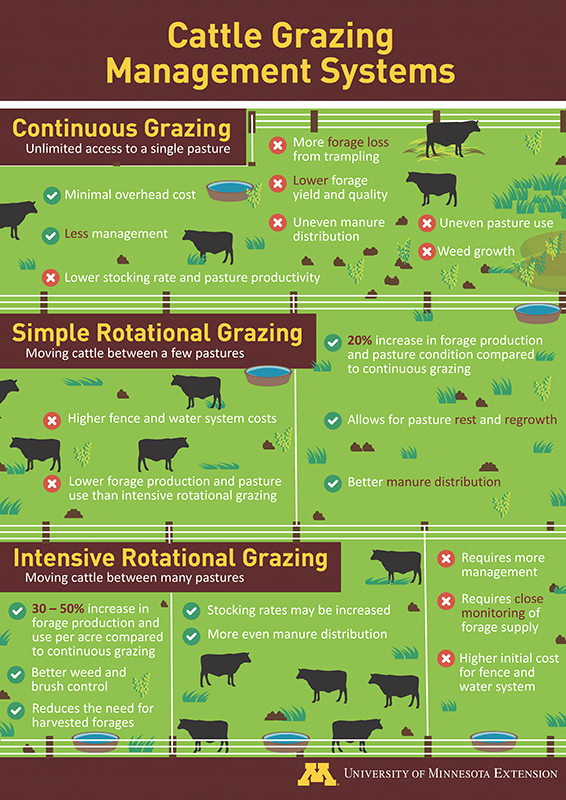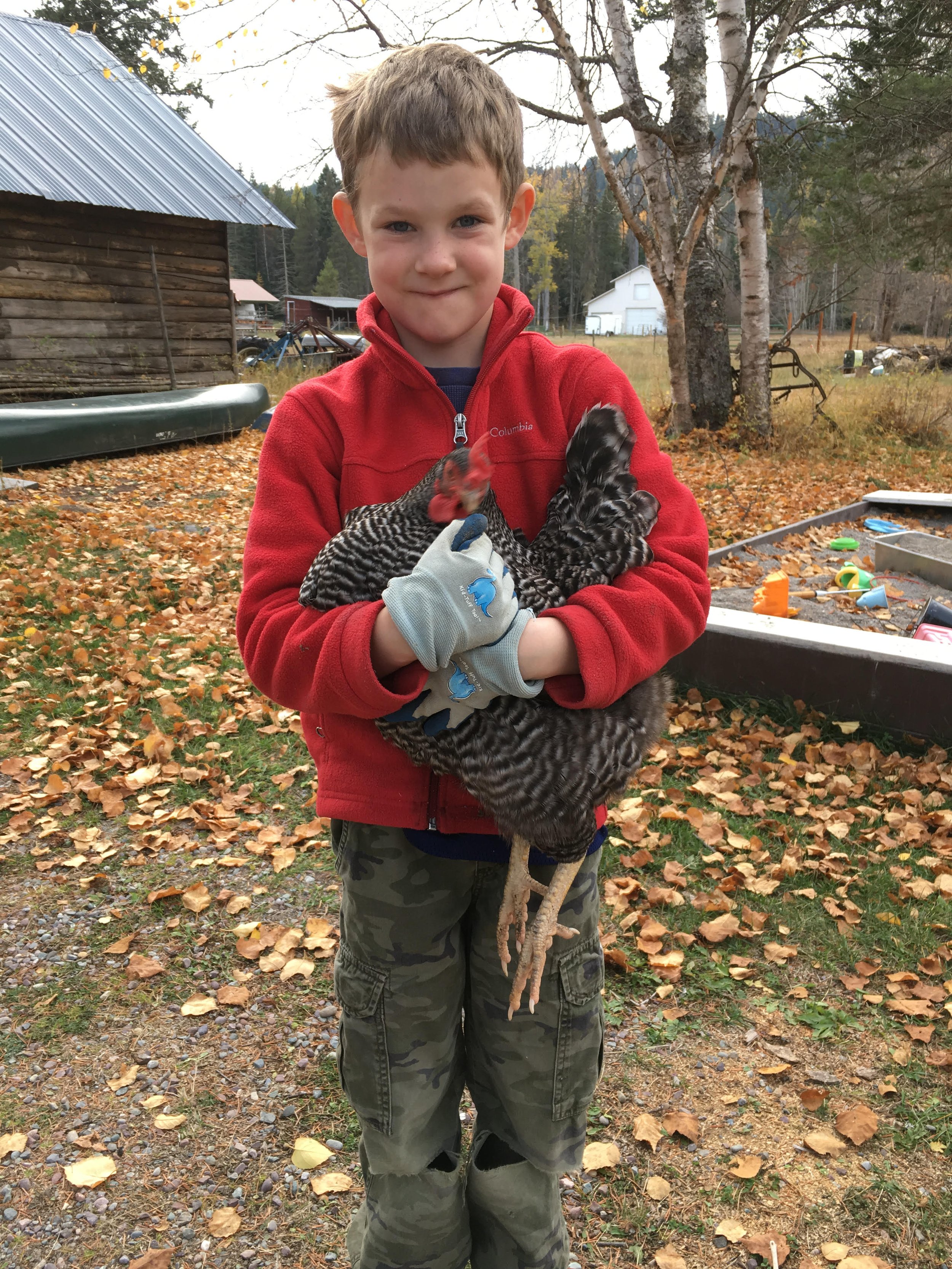
Hobby Farming and Pasture Management
Often people move to the Flathead to “live the Montana Dream,” owning horses or cattle. However, after a season of grazing animals, they may find themselves with a dried up pasture full of weeds or an empty chicken coop.
Adopt a few simple practices around the farm to help sustain your small farm’s productivity and longevity.
Sustainable Grazing Systems
-
In the Flathead region, where rainfall is limited, Montana State University's range specialist recommends a grazing density of 1 (one) Animal Unit per 10 acres. An Animal Unit is equivalent to a 1,000 lbs. cow-calf pair. Keep in mind that a horse is considered 1.5 Animal Units, which means you may need 15 acres to support one horse. It's worth noting that This is different than what the Flathead zoning laws allow, which is 10 horses per 5 acres. Too many horses may quickly exhaust your pasture.
-
In the spring, pasture grass must be allowed to grow a height of 10 inches before livestock are put on it. Animals should be removed when grass is 3” short, where most carbohydrates are stored in grasses. Grasses need this energy to regrow and survive winter. If animals are allowed to graze this tasty portion (and they will if allowed), the plant will die leaving the pasture open to weed invasion.
-
Implementing a rotational grazing system is beneficial for pasture health. Dividing the pasture into several lots, including a dry lot with shade and clean water, allows your pasture to rest. This rotational grazing approach promotes healthy grasses and soil.
For detailed insights and tips on implementing this system, explore "Rotational Grazing Tips" by Linda Coffey and “Grazing and pasture management for cattle,” by University of Minnesota Extension.
Solstice Rule
TIME TO REST PASTURES
After June 21, our cool season pasture grasses lose their roots and stop growing, leaving what is known as the ‘summer slump’. After this, grasses need to recover and not be under pressure by livestock.

Land Stewardship: Pasture Management Webinar
Land Stewardship Series by the Flathead Conservation District.
Healthy Soil for Vibrant Crops
Healthy soils are the foundation to thriving crops. Soils with a healthy layer of organic matter and a diversity of grasses are better at storing nutrients and water, resisting erosion, and supporting healthy crops. They also need less fertilizer and water.
Following are some tips to transition to healthy soil management practices:
-
Embrace cover crops and mulching to protect your soil, reduce soil erosion, build organic matter and nutrients, and improve the soil’s water retention through increased root density.
-
Minimize tillage and pesticides to protect beneficial soil organisms, prevent soil exposure, and preserve vital nutrients.
-
Properly managed, grazing animals, including chickens, can improve soil health by enriching it with natural fertilizers (manure) and breaking up dead plant material with their hoofs.
-
Maximize diversity by planting a variety of native perennial and annual plants. Diverse plant communities create a healthier pasture, grassland, and backyard.

Land Stewardship: Soil Health Webinar
Land Stewardship Series by the Flathead Conservation District.
Protecting Livestock
Whether you own a farm, a ranch, or simply raise livestock, make sure you are safeguarding your animals and property.
-
including firm doors and windows to reduce the risk of attracting bears and other wildlife to your property.
-
to prevent attracting bears attracted to your property in search of food scraps. Keeping bears at bay protects both your livestock and the bears themselves.
-
including your chicken coop, calving grounds, beehives, and compost. These are proven to be effective in keeping bears away.
Resources
Landowner Assistance
For assistance, reach out to:
Flathead County Extension | Flathead Conservation District
Farm Link Montana | Save Farmland
Natural Resources and Conservation Service
Grazing Management
"Rotational Grazing Tips" by Linda Coffey
“Idaho Forage Management” by University of Idaho Extension
“Grazing and pasture management for cattle” by University of Minnesota Extension
Soil Health
Cover Crop in Organic Systems, NCAT ATTRA-Sustainable Agriculture
Managing Soils for Water, NCAT ATTRA-Sustainable Agriculture
Learn How to Add Compost to Your Small Farm
Protect Livestock
Deterring Bears with Electrified Fencing: A beginner’s guide
Farmers & Ranchers: Safety tips to protect you and your property





